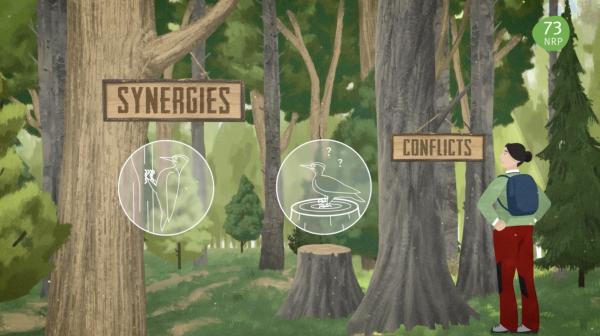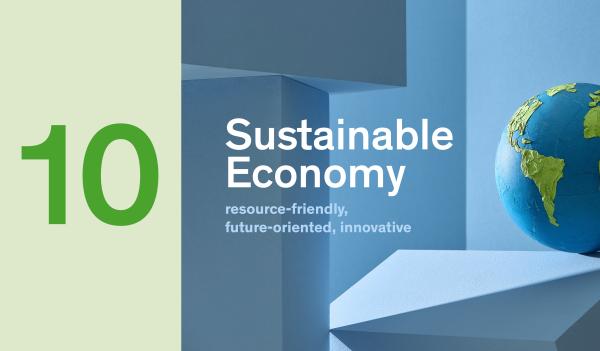Forest Management
Forests provide various Forest Ecosystem Services (FES) but not all synergies and trade-offs between them are well understood. The sustainability transition will increase existing and create new such trade-offs. A “mainstreaming” of FES is needed across sectors and at all levels of decision-making.

Background
Forests provide multiple FES, such as timber, carbon sequestration, protection against gravitational hazards, and they contribute to preserve biodiversity. Responses to major global challenges (e.g., mitigating climate change, promoting renewable energy, etc.) imply an increase in FES demand, requiring adapted forest management, policy instruments and governance arrangements to prioritize FES. Many decision-makers and stakeholders are not fully aware of the complex implications, which makes the “mainstreaming” of FES a political priority.
Aim
The synthesis emphasizes the need to include a broad variety of ecosystem services in political, economic and individual decision-making. It further highlights project results that can aid in the design of appropriate policy instruments, e.g., the creation of markets for FES (carbon sequestration, biodiversity offsetting in the forest) or the development of decision-support systems for forest enterprises.
Results
Our research identifies synergies and trade-offs between different FES. The case studies showcase valuation techniques and policy instruments supporting sustainable forest development and adapted ecosystem service provision that can provide solutions for reconciling FES trade-offs and develop markets or payment schemes for FES other than timber. These topics have been elaborated in three different media: a policy brief, a podcast, and an animated short film.
Policy Brief
The policy brief outlines the particularity of the forest sector and the need for a mainstreaming of FES across sectors and at all levels of decision-making and implementation. Mainstreaing is defined as (1) raising awareness of FES, which might lead to income diversification possibilities while recognizing the limited capacity of the forest sector to satisfy all possible demands, (2) defining ambitious policy objectives, and prioritizing as well as coordinating them across sectors, and (3) developing more appropriate policy instruments, acknowledging regulatory instruments as the backbone of forest policy but also promoting market- and information-based instruments.
Podcast
The podcast highlights the Swiss context of multipurpose forestry. It aims to sensitise the broader audience to the need for adapted forest management due to the current challenges induced by sustainability transformations and climate change. It particularly points to the problem that so far many forest services are still provided for free, which is impeding cost-transparency and thus also reducing the awareness of the challenges forest enterprises are currently facing.
Animated movie
The more general content of the synthesis was visualized in an animated movie addressing a broader audience of lay-people. It uses an atmospheric illustration of potential trade-offs between FES, and emphasizes that an intersectoral coordination of demands and adapted forest management are needed.
Implication for research
Forests and FES play a central role in climate change adaptation, biodiversity preservation and the transition to a sustainable economy. This should be reflected in future research. While identifying synergies and trade-offs across a wide variety of different (economic) sectors as well as vertically across different administrative scales is essential, tools need to be elaborated that help “mainstreaming” the various FES and thus supporting private and public decision-making.
Implication for practice
Due to close collaboration and exchange with various stakeholders, particularly the FOEN, forest owner organizations, cantonal agencies and NGO’s, our synthesis has contributed to a more explicit consideration and usage of FES in forest policy and forest management alongside the still more commonly used concept of forest functions. In addition, the prototype of the IT-based decision support system forms the basis for developing a widely applicable decision-support tool for forest managers.





